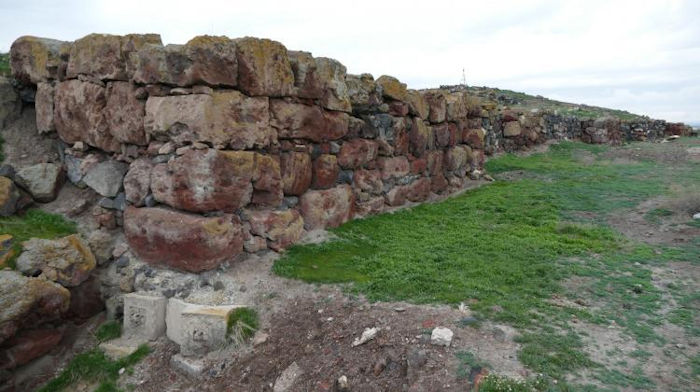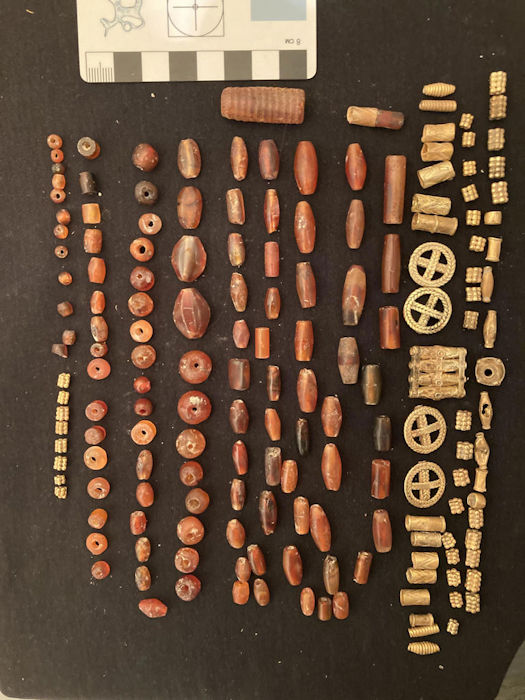Jan Bartek – AncientPages.com – Archaeologists excavating in Armenia have discovered a mysterious Bronze Age tomb that contains a couple that died together and magnificent gold artifacts. Nicknamed the “golden tomb,” the burial place was unearthed by a Polish-Armenian team of archaeologists at the site of Metsamor, a once important religious and economic center in ancient Armenia.

View of the citadel. PH๏τo. Simon Zdziebłowski
Inside the ancient well-preserved tomb, scientists found two skeletons and the remains of a wooden burial bed.
“The death of these people is a mystery to us, we do not know the cause, but everything indicates that they died simultaneously because there are no traces of the reopening of the tomb,” Metsamor expedition director Dr. Krzysztof Jakubiak said in a press release.
Archaeologists say the human bones are still in good condition, and the skeletons had slightly shrunken legs. Preliminary estimates show that the couple died at the age of 30-40.
Professor Jakubiak said this is a unique find because the grave has not been robbed and is richly equipped.

Beads and pendants found in the tomb. PH๏τo: Marek Truszkowski
The tomb dates from the late Late Bronze Age (1300–1200 BC). Around this time, the famous pharaoh Ramesses II the Great ruled Egypt. Inside the tomb, archaeologists found over a hundred beads and gold pendants. Some of them look a bit like Celtic crosses. According to Professor Jakubiak, dozens of carnelian pendants made up three necklaces.
The grave also contained a dozen complete ceramic vessels and a unique faience flask. However, it is not of local production. It was brought from the Syrian-Mesopotamian borderland, scientists have determined.
Prof. Jakubiak said that about 100 graves have been examined in the huge necropolis, which is probably about 100 hectares, but only a few have not been looted.
See also: More Archaeology News
According to scientists, the graves in this cemetery had the form of burial mounds – stone boxes were covered with a large amount of earth. However, almost no trace of the embankments has survived to our times.
Metsamor was once a thriving society, but little is known about the people living there. This large, fortified settlement was inhabited by people who had no written language and, as a result, left no texts behind.
Written by Jan Bartek – AncientPages.com Staff Writer





